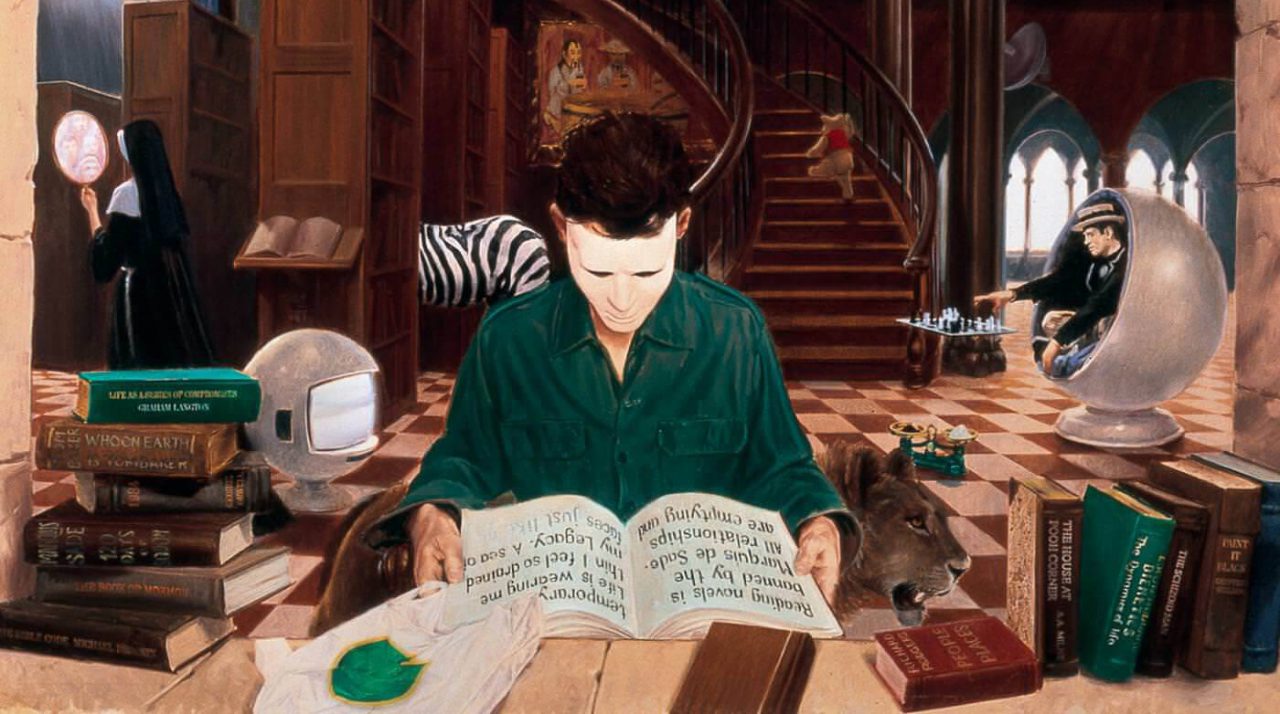The Bundle for Racial Equality! It was a lovely gesture by itch.io which raised a bunch of money in support of Black Lives Matter, and it contained an absolute ton of games. Some contributions were little shovelware things which it wasn’t much sacrifice for the makers to give away in a charity bundle, others represented significant pieces of makers’ CVs. There’s too many games in the bundle to do more than scratch the surface – I expect I will only bother to play a tiny fraction – but here, as in the previous article in the series, is some whose concepts jumped out at me enough to get me to play.
Boreal Tenebrae Act 1: I Stand Before You, A Form Undone

Boreal Tenebrae is essentially a demo-cum-early alpha of what is hoped to be a larger game. It’s a sort of third-person 3D adventure game with some mild survival horror elements, making extensive use of bizarre dream logic and a retro late-PS1-era aesthetic. You get to play various characters over the course of the game and unpick some of their stories, but the two core characters are Sarah and Bree, a pair of sisters who live in a diverse town with various human and animal-person residents.
After the Toad family who run the local mill decided to sell up, the town went into a terminal decline; a mysterious “static” force came in, distorting the town and consuming its residents one by one. Sarah had a bit of a fascination with occult ideas of using TV static for ritual purposes, and so investigated – and ended up trapped in a bizarre otherworld of discarded garbage. Bree is left mourning her disappearance – but as she investigates further, she finds that she and Sarah have retained a curious connection, and that through the use of the trusty old combi-TV/DVD player at home, they can enter into the lives and adopt the perspectives of other residents of the town. As they pick through the fever dream of their dying home, the sisters might just be able to weave together something to salvage from it – and find a way for Sarah to escape the purgatorial static-realm.
This is essentially an inventory puzzle game, with the twist that all the different player characters have access to the same inventory, so stuff you discover in one location as one character can unlock progress elsewhere. It’s a fun little conceit which sets up some bizarre chains of events, because sometimes things you uncover in one place unlock events which happened previous to it. The overall concept is quite neat, and there’s clearly a lot in there to explore, but this is only a first act demo which takes you through the first few puzzle chains and then just sort of abruptly ends. Hopefully the finished game will flesh out this promising seed the way it deserves.
Continue reading “Scratching My Itchy Bundle: Dying Towns, Abandoned Computers, Darkened Apartment Complexes, and Retro-Chic Heists”

 Chase: Cold Case Investigations – Distant Memories is, let’s make no mistake, an incredibly awkward title for a game. I can only assume, based on issues with the plot and characterisation I will get to in a bit, that the title reflects the ambitions of the designers – that this is supposed to be the first episode in a series of Chase: Cold Case Investigations, and we are supposed to understand Distant Memories as being the title of the episode.
Chase: Cold Case Investigations – Distant Memories is, let’s make no mistake, an incredibly awkward title for a game. I can only assume, based on issues with the plot and characterisation I will get to in a bit, that the title reflects the ambitions of the designers – that this is supposed to be the first episode in a series of Chase: Cold Case Investigations, and we are supposed to understand Distant Memories as being the title of the episode.


 Much of the charm of the Nintendo DS, like its grown-up cousin the Wii, lies in how charmingly tactile it is. The split between the touchscreen, which you prod and poke at with the provided stylus, and the viewscreen where the other half of the action is displayed – and which you can’t directly poke – opens up a wealth of possibilities which game designers are right now exploiting to the hilt; like the Wii, the DS has prompted a wave of originality in game design. On the other hand, one wouldn’t immediately associated point-and-click adventures, or Japanese “interactive novels”, with an intensely tactile experience. Part of the Phoenix Wright-inspired explosion of adventure games on the DS is Hotel Dusk: Room 215, a hybrid of point-and-click adventure puzzler and interactive novel which makes full use of the DS’s capabilities.
Much of the charm of the Nintendo DS, like its grown-up cousin the Wii, lies in how charmingly tactile it is. The split between the touchscreen, which you prod and poke at with the provided stylus, and the viewscreen where the other half of the action is displayed – and which you can’t directly poke – opens up a wealth of possibilities which game designers are right now exploiting to the hilt; like the Wii, the DS has prompted a wave of originality in game design. On the other hand, one wouldn’t immediately associated point-and-click adventures, or Japanese “interactive novels”, with an intensely tactile experience. Part of the Phoenix Wright-inspired explosion of adventure games on the DS is Hotel Dusk: Room 215, a hybrid of point-and-click adventure puzzler and interactive novel which makes full use of the DS’s capabilities.